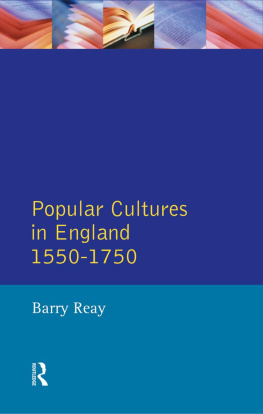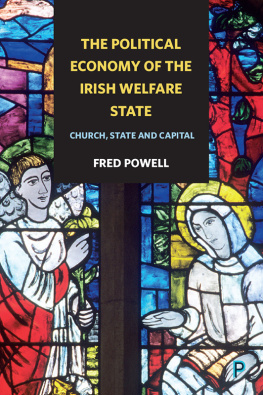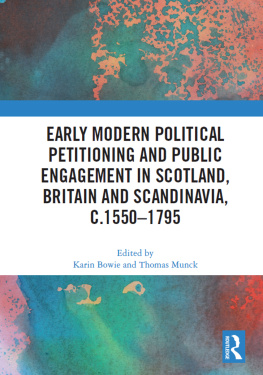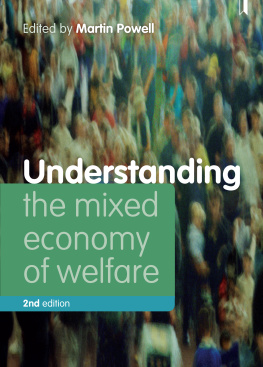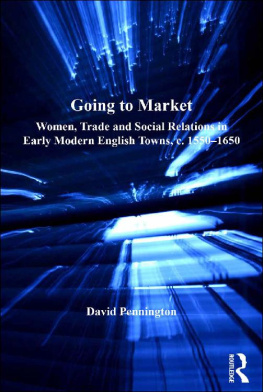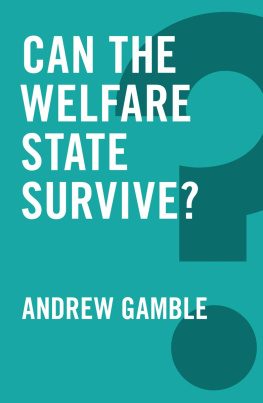PEOPLE, MARKETS, GOODS:
ECONOMIES AND SOCIETIES IN HISTORY
Volume 8
Almshouses in
Early Modern England
Almshouses providing accommodation for poor people are a common feature of the towns and villages of England, visible representations of historic attitudes towards the poor. The period after the Reformation saw not only the survival of many medieval institutions but also a remarkable number of new foundations, as people from many different backgrounds used their wealth to revive and remodel this ancient form of provision to meet new needs. This book addresses a neglected element of English welfare history, examining the role and significance of English almshouses in the period 1550-1725 and the contribution they made within the developing welfare systems of the time.
Drawing on archival evidence, the book analyses why almshouses were founded and the reasons for the continuing popularity of this particular form of charity; who the occupants were; what benefits they received; and how residents were expected to live their lives. It challenges the assumption that Post-Reformation almshouses were places of privilege for the respectable deserving poor and reveals a surprising variation in the socio-economic status of almspeople and their experience of almshouse life. The book places these findings in the context of the contemporary national and local debates about poverty and poor relief and argues that early modern almshouses took on a distinct and new identity within the changed landscape of relief provision in post-Reformation England. Many almshouses played an integral role in the early welfare provision of their local communities, yet, ultimately, their significance was affected by the emergence of harsher public provision in the new workhouses of the eighteenth and nineteenth centuries.
ANGELA NICHOLLS is Associate Fellow at the University of Warwick.
PEOPLE, MARKETS, GOODS:
ECONOMIES AND SOCIETIES IN HISTORY
ISSN: 2051-7467
Series editors
Barry Doyle University of Huddersfield
Nigel Goose University of Hertfordshire
Steve Hindle The Huntington Library
Jane Humphries University of Oxford
Willem M. Jongman University of Groningen
The interactions of economy and society, people and goods, transactions and actions are at the root of most human behaviours. Economic and social historians are participants in the same conversation about how markets have developed historically and how they have been constituted by economic actors and agencies in various social, institutional and geographical contexts. New debates now underpin much research in economic and social, cultural, demographic, urban and political history. Their themes have enduring resonance financial stability and instability, the costs of health and welfare, the implications of poverty and riches, flows of trade and the centrality of communications. This paperback series aims to attract historians interested in economics and economists with an interest in history by publishing high quality, cutting edge academic research in the broad field of economic and social history from the late medieval/early modern period to the present day. It encourages the interaction of qualitative and quantitative methods through both excellent monographs and collections offering path-breaking overviews of key research concerns. Taking as its benchmark international relevance and excellence it is open to scholars and subjects of any geographical areas from the case study to the multi-nation comparison.
PREVIOUSLY PUBLISHED TITLES IN THE SERIES ARE
LISTED AT THE END OF THE VOLUME
Contents
Online Appendices
Appendix A: Almshouse Foundations in County Durham, Warwickshire and Kent http://boybrew.co/2fgqQU5
Appendix B: Almshouse Foundations by Decade in Eight Counties, 15501800 http://boybrew.co/2fjbuwk
Appendix C: Almshouse Stipends by Decade in Six Counties, 15501700 http://boybrew.co/2eiEZvD
Acknowledgements
There are very many people who have helped to bring this book into being. My greatest debt is to Steve Hindle, who not only provided the inspiration for the topic through a chance remark many years ago, but who went on to supervise my doctoral research, and has provided me with endless support, encouragement and practical assistance over the years. I feel privileged to have served my apprenticeship with so accomplished a master. I have also been fortunate in the many friends and colleagues, historians and non-historians alike, who make Warwick University a true community of scholars. In particular I am grateful to Beat Kmin, whose help has been immeasurable, and to Bernard Capp and Peter Marshall for their enthusiasm, support and advice. I also appreciate the help I received from the many historians who took the trouble to talk to me at an early stage of my research, and those who shared information with me when I had nothing myself to contribute. In particular, I want to thank Matthew Alexander, Ian Archer, Jeremy Boulton, John Broad, Gillian Crosby, Gillian Draper, Adrian Green, Margaret Harvey and Miri Rubin. I am especially grateful to Marjorie McIntosh for her interest and her generosity in giving me access to her data compiled over a lifetimes research.
I considered myself lucky to stumble across the Family and Community Historical Research Societys Almshouse Project while it was still ongoing, discovering so many people who shared my obsession with almshouses. My thanks are due to Nigel Goose and Anne Langley who led the project, and to Helen Caffrey, Sylvia Pinches, Jackie Grant, Christine Seal and the many other researchers who were happy to share with me their findings. While conducting my own research I was grateful to receive financial help from the Economic History Society, and assistance from many archivists and librarians who offered suggestions and local knowledge. Often they were valiantly providing a professional service against a background of demoralising cuts and closures.
I am extremely grateful for the patience and forbearance of my friends and family who have put up with my preoccupation for longer than is reasonable, and even pretended a kindly interest at times. I want to thank Dave Steele for his help with the photographs and maps; my sister Helen Donald for her encouragement and exemplary proofreading; and my daughter Tessa Nicholls for her practical support and help with the maths, as well as for her calm detachment and good sense.
Lastly, my oldest debts of gratitude are to my mother, Afril Donald, who first taught me to look around and be curious about what I saw; and to Judith Penrose and Professor H. S. Offler, two inspirational teachers of history. This book is dedicated to the memory of these three.


